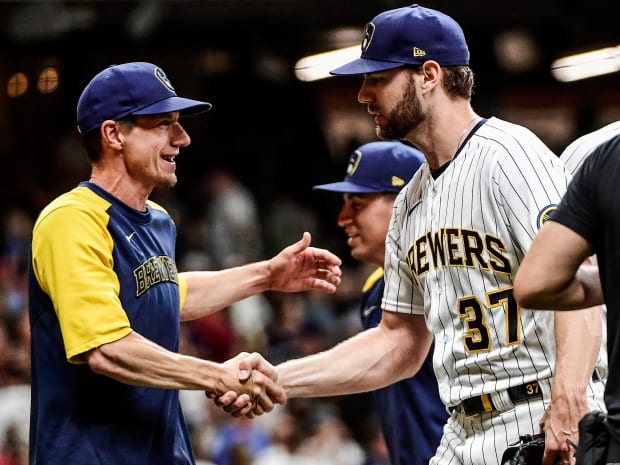Should baseball implement a pitch clock, set roster limits and/or revise replay review?
The most pressing issues to address in the new collective bargaining agreement deal with baseball's financial structures, such as free agency, minimum salaries and revenue sharing. But MLB and the players' union can also alter how the game is played.
It's almost certain that there will be a designated hitter in both leagues next season, which hopefully will begin on time, and some form of expanded playoffs. Beyond that, though, MLB and the players' union also could decide to revise the rules for replay review, institute a pitch clock and curb the number of pitchers allowed on rosters, among plenty of other possible changes.
We asked four members of our baseball staff which rule change they would most like to see implemented in the next CBA.

Benny Sieu/USA TODAY Sports
Stephanie Apstein
I have always liked the cap on pitchers on the roster. MLB announced in February 2020 that it would limit that number to 13, but for obvious reasons that was no longer a priority when the season opened, and there hasn't been one since. I would go a step further, though, and make it 12. This would fix a lot of fans' issues with the sport: It would incentivize managers to stick with their starters, cut down on unnecessary pitching changes and motivate hurlers to conserve their energy so they could go deeper, leading to fewer of those relief appearances where every pitch is a 102-mph fastball or a slider with 10 inches of vertical movement.
Emma Baccellieri
A pitch clock. Yes, it's small, but it's a good way to start nibbling at pace of play: It eats away at pockets of dead time without introducing anything fundamentally disruptive to the game. It's been in the minor leagues for years now. That means there's considerable existing data to pull from to see just how it's worked—and that players coming up through the system now are already used to it. At this point, it seems like a no-brainer.
Will Laws
The institution of the 15-second pitch clock in Low A ball in June shaved off an average of 21 minutes of game time over the rest of the season. It also helped revert the sport to a more entertaining brand of baseball by decreasing walks and strikeouts while increasing runs and home runs. The change was well received by everyone involved. After a postseason that regularly featured games dragging on past midnight on the East Coast, this would be a win for the fans, players and MLB at large.
Matt Martell
I favor both a pitch clock and limiting the number of pitchers on a roster, and I've written about how MLB could—and should—change its replay-review rules. That said, I really want to see baseball adopt a hybrid extra-innings rule instead of reverting entirely back to the traditional format.
Commissioner Rob Manfred said earlier this year that the league would get rid of seven-inning doubleheaders and likely no longer have extra innings begin with a runner on second base. I support this, but only to an extent. I'm on record here saying how much I enjoyed the instant action of the "ghost runner," especially because that rule applied only in the regular season. But, I also understand that it does create some wonky results that some view as inauthentic. My proposal is one I've seen elsewhere: play the 10th and 11th innings traditionally, but all innings thereafter would begin with the ghost runner on second. Like the extra-innings rule MLB used over the past two years, this hybrid format would be played only during the regular season.
More MLB Coverage:
• MLB Is Not Even Trying to End the Lockout
• Reranking the Top-25 Free Agents
• MLB Players Can't Stay Silent Anymore During Lockout
• Why Aren't the Yankees Acting Like the Yankees?
• Braves Risk Wasting a Ready-Made Repeat Opportunity